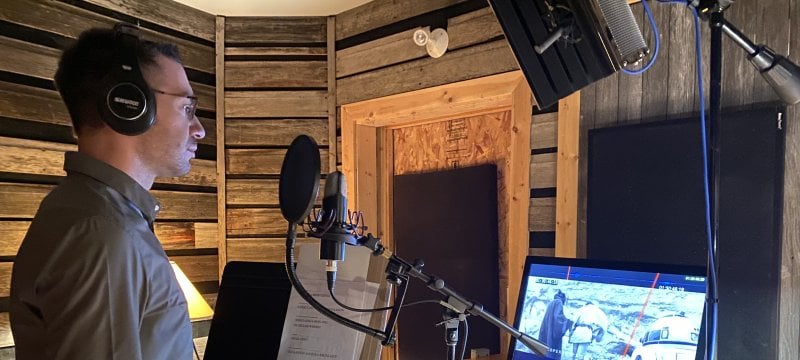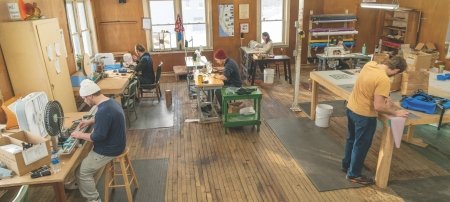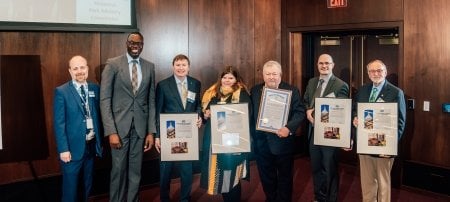Michigan Tech alumnus Kalvin Hartwig ’10 has dedicated his career to supporting Indigenous language and cultural revitalization. Now, in a galaxy not so far away, Hartwig brings this mission to new heights as one of the main cast voice actors in the Ojibwe dubbing of Star Wars: A New Hope, streaming on Disney+ as of October 27.
Niigaanii-Animikii Inini Kalvin Hartwig, a 2010 Michigan Tech graduate in social sciences, humanities, and German language, voices the Red Leader character, originally played by the late Gordon “Drewe” Henley. Hartwig, an award-winning filmmaker and member of the Sault Ste. Marie Tribe of Chippewa Indians, pursued the role after seeing a Facebook ad.
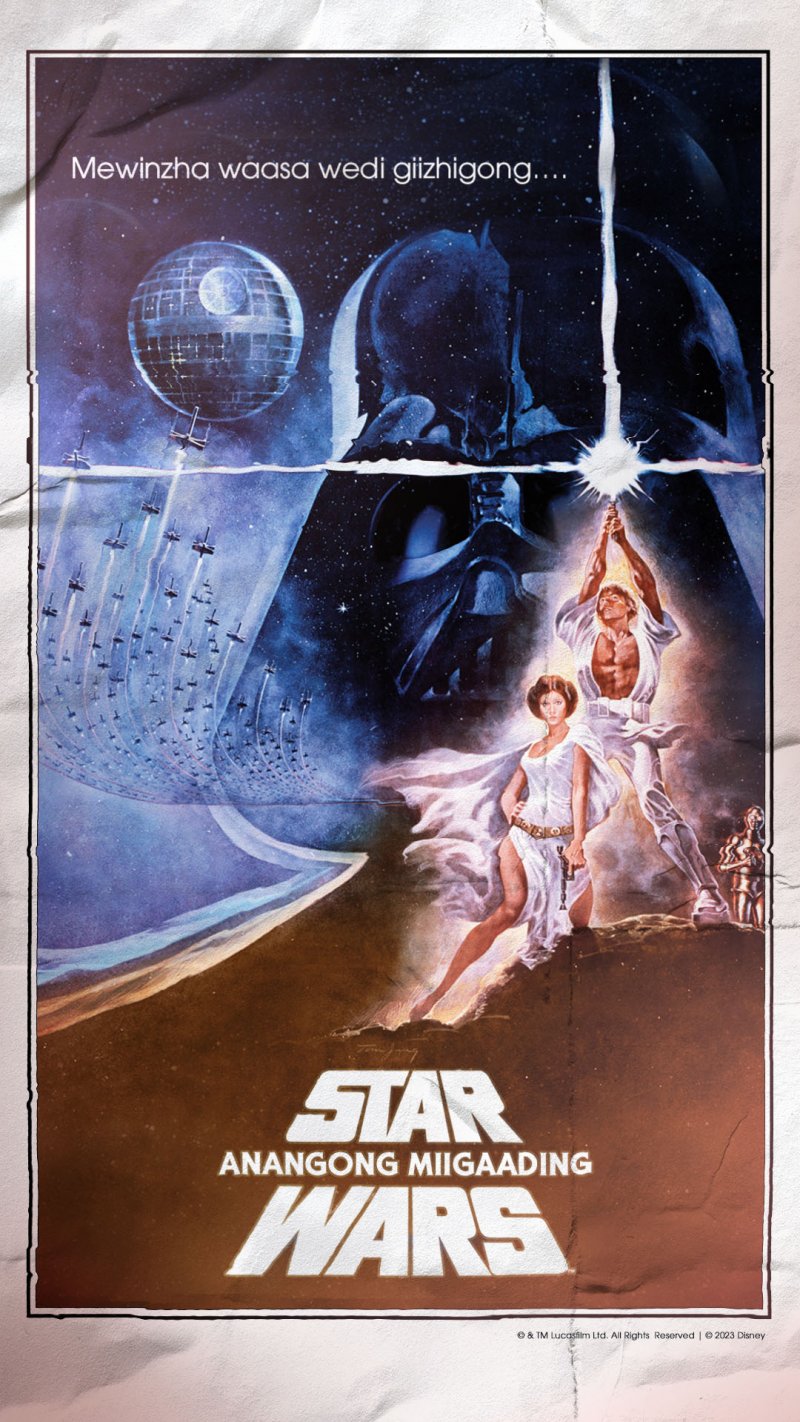
“I applied and was asked to audition. I recorded my auditions and sent them in,” Hartwig said. “I was then asked to audition live over Zoom with the director Ellyn Stern Epcar and one of her assistants. Ellyn offered me the main cast role of Red Leader, which I felt honored to accept.”
An advocate for Indigenous language and cultural revitalization, the project is more than just entertainment for Hartwig. “I feel proud and honored to join such an inspiring team of people making this history. And how incredible it was to feel the pride of the hundreds of fellow Anishinaabeg in the premiere audience hearing our language on the big screen.”
Taking place over a 10-day period in Winnipeg, Manitoba, Hartwig said the recording process was both exciting and challenging. “It’s not always easy for me to be loud. And yet, Red Leader must yell his lines in the scene. It took a few tries for me to project my voice loud enough, all the while focusing on other aspects as well, such as proper pronunciation, clear annunciation, speed to match the lips of the original acting, and emotion.”
Star Wars (Anangon Miigaading): A New Hope is the first Hollywood or Disney film to be dubbed in Ojibwe, also known as Ojibwemowin and Anishinaabemowin. Hartwig views the film as a cultural milestone and hopes it leads to many more, if not all, Hollywood films being produced in Ojibwe.
“A New Hope is such an epic story, and so many love it! What an excellent first Hollywood film to dub into Ojibwe. I hope it inspires many to continue or begin learning Ojibwemowin.”
Once a Husky, Always a Husky
Reflecting on his time at Michigan Tech, Hartwig recalls fond memories, from playing broomball and snowboarding to studying German and DJing on WMTU. Seeking a well-rounded education, he found exactly that in the Keweenaw.
“I learned a lot about myself, including more about what it means to be Ojibwe, while studying at Tech. I first learned about the importance of revitalizing Anishinaabemowin through my senior thesis research, and I met several people who changed my life, including professors Mary Durfee, Carol MacLennan, Carl Dassbach, and Dieter Adolphs. They had some of the biggest impacts on me, and I still use what I learned from them.”
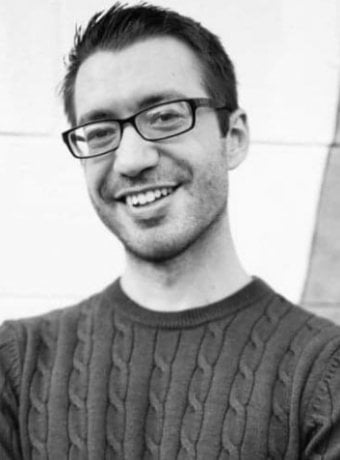
Hartwig, who produced the award-winning short film This Is Who I Am (2017), is currently studying Ojibwe at Lac Courte Oreilles Ojibwe University and looks forward to exploring future acting and media production opportunities. He recommends Rosetta Stone for anyone interested in learning the language.
Beyond Star Wars, Hartwig recently moderated a panel discussion at 41 North Film Festival for Bad River (2024), a film co-sponsored by Michigan Tech's Engagement and Belonging office that chronicles Great Lakes conservation and sovereignty. Through research, presentations, and events, Hartwig has remained engaged with the Tech community since graduation.
“In part, I hope to be contributing to students’ learning and growth, just like so many had done for me while I was a student at Tech.”
Native American Heritage Month
November is Native American Heritage Month, and like all of the United States, the Keweenaw Peninsula has been home to Indigenous peoples for thousands of years. The more recent inhabitants included those of several nations such as Dakota, Fox, and Menominee. The most prominent nation in these lands has been the Ojibwe, who are still here today. Nearby bands of Ojibwe include the Lac Vieux Desert Band of Lake Superior Chippewa Indians and the Keweenaw Bay Indian Community, with which Michigan Tech often partners in research and education projects.
As part of this observance, Michigan Tech celebrates Hartwig’s achievements alongside those of other Native American alumni. Coordinated by the American Indian Science and Engineering Society (AISES) and Center for Diversity and Inclusion, Native American Heritage Month features programs and events that highlight the historical and contemporary accomplishments of American Indians and First Nations peoples.
Michigan Technological University is an R1 public research university founded in 1885 in Houghton, and is home to nearly 7,500 students from more than 60 countries around the world. Consistently ranked among the best universities in the country for return on investment, Michigan's flagship technological university offers more than 185 undergraduate and graduate degree programs in science and technology, engineering, computing, forestry, business, health professions, humanities, mathematics, social sciences, and the arts. The rural campus is situated just miles from Lake Superior in Michigan's Upper Peninsula, offering year-round opportunities for outdoor adventure.
